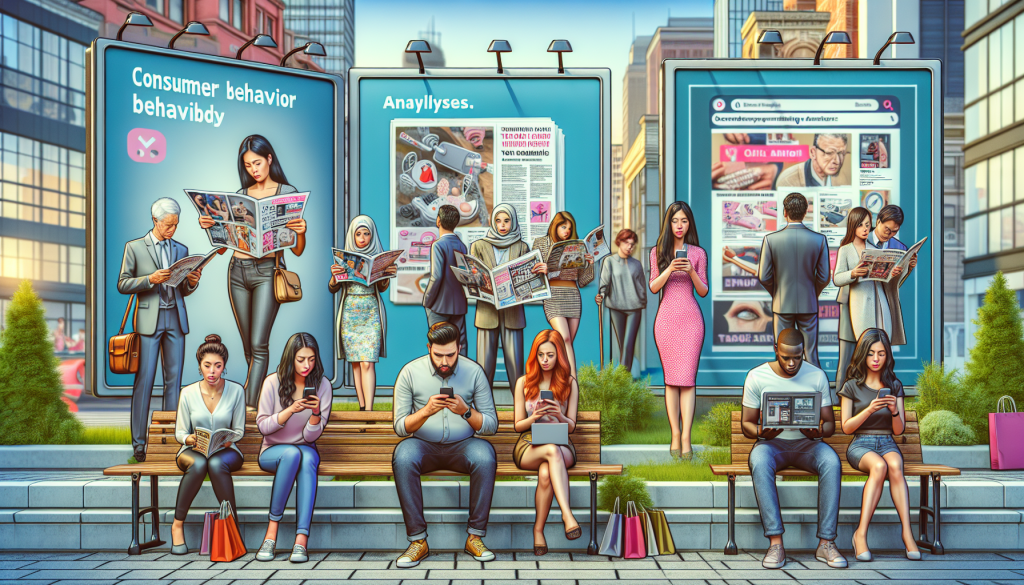Are you ready to take your gaming experience to a whole new level? Look no further than augmented reality gaming! With its immersive and interactive features, augmented reality has transformed the gaming industry, providing players with an unparalleled level of excitement and engagement. In this article, we will explore the benefits of augmented reality in gaming and discuss some popular augmented reality games that have made a significant impact. Get ready to dive into the world of augmented reality gaming!
The Benefits of Augmented Reality in the Gaming Industry
Augmented reality (AR) gaming combines the virtual world with the real world, overlaying digital elements onto the player’s physical environment. This technology harnesses the power of smartphones, tablets, and wearable devices to create an immersive and interactive gaming experience.
One of the major benefits of augmented reality gaming is its ability to blur the lines between reality and the virtual world. Unlike traditional video games that confine players to a screen, AR gaming allows players to move around and interact with their surroundings. This not only enhances the gameplay experience but also promotes physical activity and exploration.
Another advantage of augmented reality gaming is its social aspect. Many AR games encourage multiplayer interactions, allowing friends and family to join forces and compete against one another. This social element adds a whole new dimension to gaming, fostering collaboration and friendly competition.
Furthermore, augmented reality gaming has the potential to revolutionize education and learning. By incorporating educational content and interactive features, AR games can make learning more engaging and enjoyable for students of all ages. From history lessons to science experiments, augmented reality can bring subjects to life and provide a hands-on learning experience.
Not only does augmented reality gaming offer a range of benefits, but it also provides game developers with endless possibilities for creativity and innovation. With AR technology, developers can create unique and immersive gaming experiences that captivate players and keep them coming back for more.
Popular Augmented Reality Games and Their Impact
Several augmented reality games have gained immense popularity and have had a significant impact on the gaming industry. One such game is “Pokémon Go,” which took the world by storm in 2016. By blending the real world with the beloved Pokémon franchise, “Pokémon Go” encouraged players to explore their surroundings and capture virtual creatures. This game not only introduced millions of people to augmented reality but also revolutionized location-based gaming.
Another popular AR game is “Minecraft Earth,” a mobile adaptation of the widely acclaimed sandbox game. With “Minecraft Earth,” players can build and explore amazing structures in the real world using augmented reality. This game has sparked creativity and collaboration among players, allowing them to bring their virtual creations to life.
“Ingress” is another notable augmented reality game that has made a significant impact. Developed by Niantic, the same company behind “Pokémon Go,” “Ingress” is a location-based game that encourages players to explore and interact with their surroundings. This game not only provides entertainment but also promotes physical activity and community engagement.
These popular augmented reality games have demonstrated the immense potential of this technology in revolutionizing the gaming industry. They have captivated audiences worldwide and continue to push the boundaries of what is possible in gaming.
Future Possibilities: How Augmented Reality Can Revolutionize Gaming
The future of augmented reality gaming is filled with exciting possibilities. As technology continues to advance, we can expect even more immersive and realistic gaming experiences. Imagine battling virtual monsters in your own backyard or solving complex puzzles that come to life right before your eyes.
Furthermore, augmented reality has the potential to transform other forms of entertainment as well. Imagine attending a live concert or sports event where holographic performers and digital enhancements create an unforgettable experience.
As augmented reality continues to evolve, it is crucial for game developers to keep accessibility in mind. Ensuring that AR games are accessible to players of all abilities is vital for creating an inclusive and diverse gaming community. By incorporating features such as adjustable difficulty levels and inclusive design principles, developers can make augmented reality gaming enjoyable for everyone.
In conclusion, augmented reality gaming offers a range of benefits and holds immense potential for transforming the gaming industry. Its ability to merge the virtual world with reality creates an immersive and interactive experience like never before. With popular games like “Pokémon Go” and “Minecraft Earth” leading the way, augmented reality has already made a significant impact and continues to push the boundaries of what is possible in gaming. As technology advances, we can expect even more exciting possibilities in the future. So, get ready to step into a world where imagination becomes reality!
Popular Augmented Reality Games and their Impact
Augmented reality (AR) gaming has taken the world by storm, captivating millions of players with its unique blend of virtual and real-world experiences. With the help of advanced technology, AR games have bridged the gap between imagination and reality, creating immersive and interactive gameplay. Let’s take a closer look at some popular augmented reality games and their impact on the gaming industry.
Pokémon Go
When Pokémon Go was released in 2016, it became a global phenomenon overnight. This mobile game allowed players to catch virtual Pokémon creatures in real-world locations using their smartphones. The game’s innovative use of AR technology, combined with the beloved Pokémon franchise, created a powerful and addictive gaming experience. Not only did Pokémon Go introduce millions of people to augmented reality, but it also encouraged players to explore their surroundings and interact with others in a shared virtual world. The game’s impact on the gaming industry was profound, paving the way for other AR games to follow.
Harry Potter: Wizards Unite
Building on the success of Pokémon Go, Niantic released Harry Potter: Wizards Unite in 2019. This game allowed players to become wizards, casting spells, and battling magical creatures in the real world. With the help of AR technology, players could see magical artifacts and characters overlaid onto their surroundings, creating a truly immersive experience. Harry Potter: Wizards Unite not only brought the wizarding world to life but also encouraged players to explore their neighborhoods and collaborate with other players to solve mysteries and complete quests. The game’s impact was evident in the millions of Harry Potter fans who eagerly embraced the opportunity to become part of the magical universe.
Ingress
Before Pokémon Go and Harry Potter: Wizards Unite, Niantic created Ingress, an AR game that laid the foundation for their subsequent releases. Ingress allowed players to join one of two factions and compete for control over real-world locations. By physically visiting these locations, players could capture and defend them, forming alliances and strategizing with other players. Ingress introduced the concept of using augmented reality to transform everyday spaces into virtual battlefields, inspiring the development of location-based AR games.
The Impact of Augmented Reality Games
These popular augmented reality games have had a significant impact on the gaming industry as a whole. They have not only demonstrated the potential of AR technology but also reshaped the way people interact with games and their environments. One of the key impacts of these games is the encouragement of physical activity and exploration. Unlike traditional video games, which often involve sitting indoors for extended periods, AR games prompt players to go outside, explore their surroundings, and engage in physical activity. This has had a positive influence on players’ health and wellbeing, promoting exercise and social interaction.
Furthermore, augmented reality games have fostered a sense of community and collaboration among players. Through shared goals, team-based challenges, and real-world events, players have formed connections and built friendships with fellow enthusiasts. The interactive and immersive nature of AR games has brought people together in ways that traditional gaming experiences could not achieve.
As AR technology continues to advance, the possibilities for augmented reality games are endless. With the integration of wearable devices such as smart glasses, players can experience even more immersive gameplay. Imagine stepping into a virtual world that seamlessly blends with the real one, where you can interact with virtual characters and objects as if they were right in front of you. The future of augmented reality gaming holds immense potential for revolutionizing the way we play and experience games.
In conclusion, popular augmented reality games like Pokémon Go, Harry Potter: Wizards Unite, and Ingress have had a profound impact on the gaming industry. They have introduced millions of players to the world of augmented reality, promoting physical activity, social interaction, and community building. As technology continues to evolve, the future possibilities of augmented reality gaming are limitless, promising even more immersive and transformative experiences for players worldwide.
Future Possibilities: How Augmented Reality Can Revolutionize Gaming
As technology continues to advance at a rapid pace, the future of gaming looks incredibly exciting. One area that holds tremendous promise is augmented reality (AR) gaming. Augmented reality combines the real world with virtual elements, creating an immersive and interactive gaming experience like never before. So, let’s dive into the future possibilities of how augmented reality can revolutionize gaming!
1. Enhanced Realism and Immersion
One of the most significant advantages of augmented reality in gaming is its ability to enhance realism and immersion. With AR technology, game developers can overlay virtual objects onto the real world, allowing players to interact with them in a more natural and intuitive way. Imagine battling virtual monsters in your living room or playing a game of digital tennis on your kitchen table. The possibilities for creating lifelike and immersive gaming experiences are virtually limitless.
2. Physical Interaction and Exercise
Traditional gaming often involves sitting for long periods, leading to sedentary lifestyles. Augmented reality gaming, on the other hand, encourages physical movement and exercise. By merging the virtual and real worlds, players are prompted to get up, move around, and actively engage with their surroundings. From chasing virtual creatures in the park to participating in virtual sports, AR gaming has the potential to promote a healthier and more active lifestyle.
3. Social and Multiplayer Experiences
Another exciting aspect of augmented reality gaming is its ability to foster social and multiplayer experiences. With AR technology, friends and family can come together in the real world and join forces in a virtual gaming adventure. Imagine teaming up with your friends to solve puzzles, conquer challenges, and navigate through a shared augmented reality world. This level of social interaction and collaboration adds a whole new dimension to gaming, making it even more enjoyable and memorable.
4. Educational and Learning Opportunities
Augmented reality gaming has immense potential as an educational tool. By seamlessly integrating virtual elements with the real world, AR games can provide educational experiences that are engaging, interactive, and informative. From exploring historical landmarks to solving science-based puzzles, AR gaming can make learning fun and accessible for players of all ages. By combining entertainment and education, augmented reality has the power to revolutionize the way we learn and acquire new knowledge.
5. Enhanced Accessibility and Inclusivity
Augmented reality technology has the potential to make gaming more accessible and inclusive for individuals with disabilities. By incorporating features like voice commands, gesture recognition, and visual cues, AR games can cater to a wider range of players. For example, someone with limited mobility can still actively participate in an AR game by using voice commands to control their character. This inclusivity will not only empower individuals with disabilities but also promote diversity and equal opportunities within the gaming community.
Conclusion
The future of gaming is undoubtedly exciting, and augmented reality is set to play a significant role in this revolution. From enhanced realism and immersion to promoting physical activity and social interaction, AR gaming has the potential to elevate the gaming experience to new heights. As technology continues to evolve, we can expect even more innovative and immersive augmented reality games that blur the line between the virtual and real world. So, get ready to step into a whole new gaming dimension where anything is possible!












